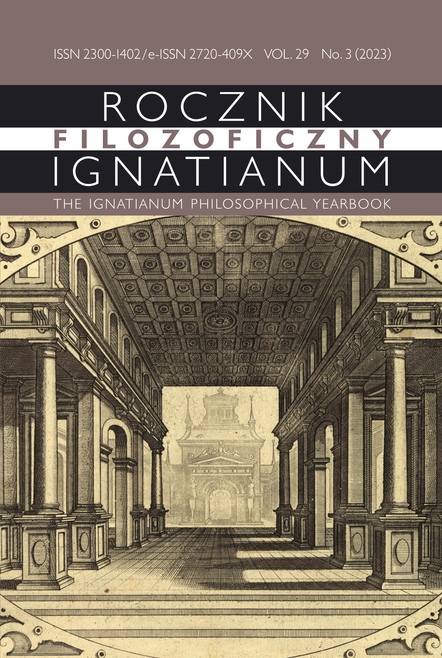Introduction
Abstract
In this, the latest volume of the Rocznik Filozoficzny Ignatianum, the first few texts are dedicated to the cultural significance of architecture. For time immemorial architecture has been a means of expressing ideas, harmony and proportion. In the ancient and medieval times the task of architecture was to reflect the principles of balance and symmetry found in the surrounding world. During the Renaissance architecture ceased being classified as a merely technical endeavor and began to be viewed also in a humanistic context. It was recognized that architecture is not merely proper building construction, but through the use of symbols and aesthetics it exerts a strong influence on culture and society. Both monumental structures (temples, university buildings, seats of power), as well as ordinary residences were designed to reflect the social needs of the time. Simplicity and symmetry vied with extravagance, dynamism and theatricality of form. The search for the root causes of these phenomena is the main thrust of the ideas presented in the texts below.
Copyright (c) 2023 Jesuit University Ignatianum in Krakow

Dieses Werk steht unter der Lizenz Creative Commons Namensnennung - Keine Bearbeitungen 4.0 International.
Rocznik przyjmuje do druku wyłącznie materiały, które nie wchodzą w żaden konflikt interesów, żaden konflikt z prawem autorskim itp. Redakcja prowadzi działania przeciw: plagiatom, ghostwriting1, guest/honorary authorship2 itp. Autor pracy zbiorowej, który jest pierwszy na liście, bierze na siebie odpowiedzialność i ma obowiązek przedstawić wkład wszystkich współautorów. Jeśli publikacja powstała dzięki dedykowanym środkom finansowym, należy ujawnić to np. w Podziękowaniu, przypisie itp. Ew. przedruki wymagają jawnego zgłoszenia i okazania odpowiedniego pozwolenia wydawniczego. Autorzy / Recenzenci nierzetelni narażają się na reakcję właściwą stosownym instytucjom.
______
1 Ma to miejsce, gdy osoba mająca istotny wkład jest pominięta na liście Autorów czy w Podziękowaniu.
2 Zachodzi, gdy na liście autorskiej pojawia się osoba mająca znikomy/żaden udział w pracy.






